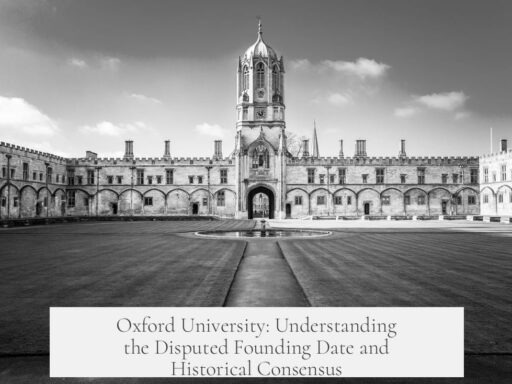The notion that 20,000 human sacrifices were carried out each year at the Aztec Great Pyramid of Tenochtitlan is a misconception. Such large numbers stem from isolated ceremonial events, not yearly routine. The Aztecs managed body disposal through ritual processing, partial consumption, and likely burial or cremation to maintain hygiene and avoid disease outbreaks.
The Aztec Empire held significant ritual sacrifices, especially during major events like the dedication of the Huey Teocalli (Great Temple) in 1487 CE. This occasion, under Emperor Ahuitzotl, possibly involved thousands of sacrificial victims, potentially reaching estimates as high as 20,000 or more. However, this figure applies to a singular event, not an annual regularity. Scholars clarify that the Aztecs did not perform 20,000 sacrifices on a yearly basis across Central Mexico.
These sacrifices served multiple roles: religious ceremonies honoring gods such as Huitzilopochtli, political displays of power, social cohesion, and intimidation of foes. These public spectacles were carefully orchestrated to reinforce Aztec dominance during periods of military and political tension. Ahuitzotl’s campaigns secured captives who were the main source of sacrificial victims for the temple dedication rites.
Handling the remains of sacrificial victims was a complex ritual. The process, described by chroniclers like Bernardino de Sahagún and Bernal Díaz del Castillo, involved:
- Removal of the heart during the sacrifice.
- Rolling the body down temple steps to priests awaiting to dismember it.
- Preservation of skulls to be displayed on the tzompantli, a wooden skull rack.
- A portion of flesh, often the thigh, was ritually consumed by the captor’s family in ceremonies.
- Remaining body parts were sometimes fed to carnivorous animals held in the royal menagerie, including jaguars and wolves.
This ritualized approach fulfilled religious obligations and likely helped mitigate health risks by promptly processing bodies. Given the large population of Tenochtitlan, approximately 200,000 people at the time, the city could mobilize substantial labor forces for both ceremony and cleanup. Mass cleanup and disposal could be conducted efficiently.
Beyond ritual consumption and animal feeding, the disposition of remains likely included burial or cremation. Aztec burial customs varied but included cremation for some social groups and burial for others. Evidence suggests some sacrificed individuals received off-site interments, reducing the likelihood that large numbers of decomposing bodies accumulated near temple precincts.
Aztec culture placed high value on cleanliness, especially within sacred spaces. Dedicated city laborers maintained public and ritual areas. Regular removal of waste, including organic remains, was instrumental in preserving hygiene in Tenochtitlan, a dense and urbanized capital built on an island in Lake Texcoco.
The reported “river of blood” and “mound of bodies” are largely symbolic or rhetorical descriptions emphasizing the dramatic impact of sacrifice ceremonies. Actual management of remains involved practical and orderly procedures consistent with Aztec religious traditions and public health awareness.
| Aspect | Details |
|---|---|
| Number of Sacrifices | High numbers (up to 20,000) recorded only for rare, large events (e.g., Huey Teocalli dedication). |
| Body Processing | Heart removal, dismemberment, skull preservation on tzompantli, ritual flesh consumption. |
| Disposition | Feeding animal carnivores, burial, cremation; off-site disposal to avoid accumulation. |
| Cleanup Labor | Mobilization of large population for ceremony and sanitation tasks. |
| Hygiene Practices | Dedicated workers cleaned temple and city; spiritual and practical importance placed on cleanliness. |
In summary, the Aztecs employed ritualized handling and disposal of sacrificial victims. They avoided health hazards through prompt dismemberment, selective consumption, and off-site burial or cremation. Large-scale cleanup was feasible given their population and labor organization. Hygiene remained a cultural and practical priority, preventing the purported sanitary nightmare often exaggerated in modern retellings.
- 20,000 sacrifices per year is a myth; such numbers were exceptional, linked to special ceremonies.
- Body processing included heart removal, dismemberment, and ritual consumption.
- Skulls were displayed on tzompantli; some remains fed to captive carnivores.
- Cremation or burial likely reduced on-site remains to manageable levels.
- Dedicated laborers maintained city and temple cleanliness to prevent disease.
Aztec Human Sacrifices: Cleaning Up the ‘River of Blood’ at the Great Pyramid of Tenochtitlan
When someone drops the phrase “20,000 human sacrifices annually at the Aztec Great Pyramid of Tenochtitlan,” it’s easy to imagine a gruesome nightmare, a literal river of blood flowing down the steps, with heaps of bodies everywhere. The mind conjures a hygiene disaster waiting to happen, right? But let’s hit pause and clear the air — and the pyramid steps — on what really happened. How did the Aztecs manage the aftermath of such intense rituals? Where did the bodies go? And were they doomed to live in disease-ridden filth? Spoiler alert: the story is far more complex and fascinating than just gore and disaster.
Was It Really 20,000 Sacrifices Every Year?
First things first: the often-quoted figure of 20,000 sacrifices yearly isn’t quite accurate. Historical research tells us that the 20,000 figure comes from accounts tied to a very specific event — the dedication of the Huey Teocalli (the Great Temple) in 1487 CE, under the reign of Emperor Ahuitzotl. It wasn’t a regular annual tally but a one-time, unprecedented number, and even then, it’s debated whether that many were actually sacrificed or if the figure is an overestimate.
This mass sacrifice happened during military campaigns when a new ruler needed captives for religious and political reasons. Ahuitzotl was dealing with rebellions and the fading power of the Aztec empire. Sacrifices weren’t just religious—they were political theater, a grand public display to intimidate rivals and reinforce power. So, the 20,000 made headlines for impact but did not reflect a yearly ritual routine.
Imagine the Cleanup Job…
Now, hypothetically, if such a mass sacrifice occurred, imagine the cleanup! This wasn’t a solitary affair with some dusty workers sweeping the floor. Historical sources suggest the whole city, perhaps up to 200,000 people, could have been mobilized in some capacity to witness and assist.
Having a massive, organized population on hand would make it possible to quickly dispose of bodies and clean large public spaces. It’s a grim image, but with tens of thousands of bodies, the Aztecs likely relied on efficient communal labor to prevent disease outbreaks and maintain order.
How Did Aztecs Handle the Bodies?
The process wasn’t left to guesswork. After the heart extraction, priests took charge. They dismembered bodies and collected skulls for display on the tzompantli—a skull rack symbolizing power and the slain enemies of the gods. The captors sometimes took a thigh for ritual meals (imagine a cannibal potluck—but strictly regulated). Other parts were thrown to animals in the royal zoo—pumas, jaguars, wolves, and even snakes—all maintained to consume sacrificial remains.
This method served multiple purposes: it was religiously significant, a political statement, and practical—getting rid of remains quickly and publicly.
Burial or Cremation? The Mystery of the Rest
Not every body ended up as food for beasts or trophies on skull racks. Some were buried or cremated, though records vary. Nobles were often cremated, but the fate of warriors or common people sacrificed is less clear. Given the sheer numbers, detailed burials for everyone would have been impractical during mass sacrifices.
It’s reasonable to believe many bodies were disposed of off-site. Cremation reduced decay issues and was spiritually cleansing. Burials outside the temple precincts minimized contamination risks and kept ceremonial spaces tidy. Archaeologists have found evidence of such practices, but the exact locations and methods remain partially shrouded in mystery. The large-scale sacrifices of 1487, if they did happen as described, must have overwhelmed standard methods and necessitated creative solutions.
Aztecs and Cleanliness: Hygiene Not Ignored
Contrary to popular belief that ancient cities were dirty and disease-ridden, Tenochtitlan was known for impressive cleanliness efforts. Dedicated laborers swept streets and maintained public waterways. Cleanliness wasn’t just practical; it had spiritual significance.
The temple and surrounding areas likely had teams responsible for cleaning after sacrifices, keeping the site ceremonially pure and physically safe. They used water channels and regular disposal routines to prevent disease outbreaks, a smart and necessary tradition for a bustling city on an island.
Wrapping It Up: Practical and Political
The myth of constant thousands sacrificed annually leading to chaotic piles of bodies and epidemics doesn’t hold up under scrutiny. Instead, sacrificial rites—dramatic and politically charged—were rare, involving many participants to manage cleanup. Bodies were partially consumed in rituals, partially given to animals, some buried or cremated. And the city’s clean-up protocols avoided turning Tenochtitlan into a cesspool.
The Aztecs balanced religious fervor and political strategy with practical public health. Historical evidence paints a picture of a society that, for all its brutality, found ways to prevent hygiene disasters in their sacred city.
Final Food for Thought:
- Could modern cities learn from how the Aztecs combined ritual and cleanup? Imagine multitasking political theater with public health!
- What other ancient societies developed such sophisticated urban cleanliness measures, and how does that change our assumptions?
In the end, the Aztec’s story reminds us: not every dramatic headline tells the whole story. Behind the blood and bones, there were systems, people, and a city that thrived with surprising hygiene and order.


